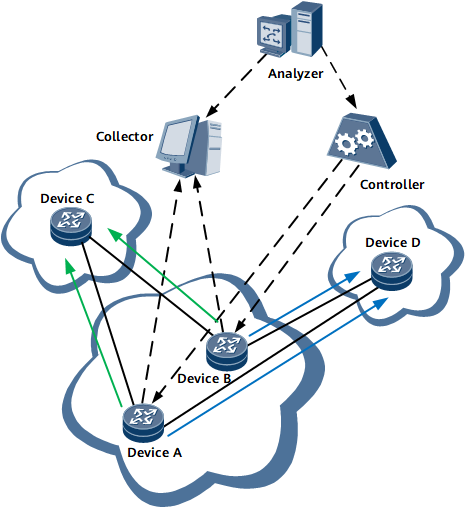Telemetry Applications in a Traffic Adjustment Scenario
Using the Telemetry technology, a collector can collect a large amount of device data and send the data to an analyzer for comprehensive analysis. After the analyzer sends the analysis result to a controller, the controller adjusts device configurations accordingly, so that you can determine whether the adjusted device status meets expectations in real time.
As shown in Figure 1, Device A and Device B support Telemetry. Assume that the traffic of Device A and Device B is transmitted to Device C through paths in green. When the optimal path changes, a user uses Telemetry to collect data indicators and push them to the collector. Then the analyzer reads the data indicators stored in the collector, analyzes and makes decisions, and sends the results to the controller. The controller sends the configurations to be adjusted to Device A and Device B. The traffic of Device A and Device B is then transmitted to Device D through paths in blue. The result of traffic adjustment can be quickly reported to the NMS, which is used to determine whether traffic adjustment meets the expectation.
Compared with conventional network monitoring modes, Telemetry greatly shortens the adjustment delay and feedback delay. It enables users to be unaware of traffic path changes and facilitates management and maintenance.
